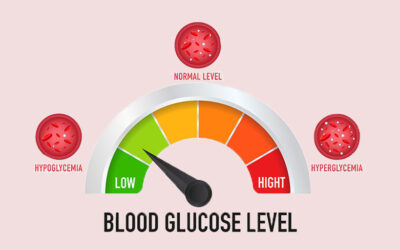World Neuroendocrine Cancer Day 2025: Raising Awareness about Rare Neuroendocrine Tumours (NETs)

Neuroendocrine tumours (NETs) are a rare type of cancer that affects the cells responsible for hormone production and nerve signalling. Although NETs account for only about 0.5% of all cancers worldwide, growing clinical awareness and improved diagnostic facilities have led to a noticeable increase in the detection of these tumours.
The challenge with NETs lies in their subtle and often misleading symptoms, which can resemble common health conditions such as digestive disturbances or hormonal disorders. This overlap frequently leads to delayed diagnosis. To bridge the gap, World Neuroendocrine Cancer Day is observed every year on 10 November, with an aim to increase awareness about these rare tumours and support those living with NETs.
In this article, we will discuss what neuroendocrine tumours are, their possible causes and risk factors, early warning signs, diagnosis, and available treatment options.
Table of Contents
ToggleWhat are Neuroendocrine Tumours (NETs)?
Neuroendocrine tumours (NETs) are rare growths that begin in the neuroendocrine cells, which are specialised cells with characteristics of both nerve cells and hormone-producing endocrine cells. These cells release hormones into the bloodstream to help control vital functions such as digestion, breathing, and blood pressure. NETs can occur anywhere in the body where these cells are found, but they are most commonly seen in:
- Pancreas: Known as pancreatic neuroendocrine tumours, these may cause hormonal imbalances or digestive changes.
- Lungs: Lung NETs can lead to persistent cough, chest discomfort, or hormone-related symptoms.
- Gastrointestinal tract: Including the stomach, small intestine, and colon, where tumours may cause abdominal pain or diarrhoea.
- Other sites: Such as the thyroid gland, adrenal glands, or brain.
Depending on their nature, NETs can be:
- Benign (non-cancerous): Usually grow slowly and remain localised.
- Malignant (cancerous): Can spread (metastasise) to other parts of the body such as the liver or bones.
Doctors also categorise NETs by their grade and differentiation, which describe how abnormal the tumour cells look under a microscope and how fast they grow:
- Low-grade, well-differentiated NETs: Slow-growing and less aggressive.
- High-grade, poorly differentiated NETs: Fast-growing and more likely to spread.
Globally, medical professionals use systems such as the International Classification of Diseases (ICD-10) to standardise NET diagnosis and treatment planning.
While NETs are uncommon, awareness of their diverse types and subtle symptoms can play a crucial role in achieving early diagnosis and effective management.
Causes and Risk Factors of Neuroendocrine Tumours
The exact cause of neuroendocrine tumours (NETs) is not always known, but research suggests that a combination of genetic, hormonal, and medical factors may increase the likelihood of developing these rare tumours. Understanding these risks can help with early screening, especially in individuals with a family history of related conditions.
Common causes and risk factors include:
- Genetic factors: Some NETs are associated with inherited genetic syndromes such as Multiple Endocrine Neoplasia type 1 (MEN1), MEN2, and Von Hippel-Lindau (VHL) disease. People with these genetic mutations have a higher risk of developing NETs in the pancreas, parathyroid, or adrenal glands.
- Pre-existing medical conditions: Chronic conditions that affect hormone balance or the digestive system, such as Zollinger-Ellison syndrome or tuberous sclerosis, may predispose individuals to NET formation.
- Hormonal imbalance: Long-term hormonal disturbances can lead to abnormal growth of neuroendocrine cells. For instance, excessive stimulation of hormone-producing glands may contribute to tumour development over time.
- Family history and age: A family history of NETs or endocrine tumours slightly increases risk, and the condition is more commonly diagnosed in middle-aged or older adults.
- Lifestyle and environmental factors: Although evidence is limited, exposure to certain environmental toxins or a history of smoking may also play a role in some cases.
Early Symptoms of Neuroendocrine Tumours (NETs)
One of the biggest challenges with neuroendocrine tumours (NETs) is that their symptoms often appear vague or resemble common health issues such as indigestion, anxiety, or hormonal imbalance. This makes early detection difficult, and many patients are diagnosed only after the tumour has progressed. Recognising the early warning signs can lead to faster medical attention and better treatment outcomes.
Common early symptoms of NETs include:
- Abdominal pain or discomfort: Persistent pain or cramping in the abdomen, often mistaken for acidity or irritable bowel syndrome (IBS).
- Flushing and unexplained sweating: Sudden redness or warmth in the face and neck, sometimes accompanied by excessive sweating, caused by hormone release from certain NETs.
- Diarrhoea or digestive issues: Frequent loose stools, bloating, or unexplained changes in bowel habits that don’t respond to usual remedies.
- Unexplained weight loss: Gradual reduction in weight without any change in diet or physical activity.
- Fatigue and weakness: Constant tiredness or low energy even after rest, which may be related to hormonal changes or nutritional deficiencies.
In some cases, symptoms depend on the location of the tumour or the type of hormones it releases. For instance, pancreatic NETs can affect insulin levels, while lung NETs may cause coughing or wheezing. Because these signs overlap with many other conditions, any persistent or unusual symptoms should be evaluated by a specialist.
Diagnosis of Neuroendocrine Cancer
Diagnosing neuroendocrine tumours (NETs) requires a combination of clinical evaluation, laboratory tests, and advanced imaging. Because symptoms often mimic other common disorders, doctors rely on specific investigations to confirm the presence, type, and stage of the tumour. The main diagnostic approaches include:
- Blood and urine tests: These measure certain substances released by NETs, such as chromogranin A, serotonin, or 5-HIAA (5-hydroxyindoleacetic acid). Elevated levels of these markers help detect hormone-producing NETs and monitor disease progression.
- Imaging tests: Modern imaging helps locate the tumour, determine its size, and identify whether it has spread. Common imaging studies include:
- CT scan: Produces detailed images of internal organs and helps identify tumour growths or metastases.
- MRI: Provides clear pictures of soft tissues, especially in the liver and brain.
- PET-CT or Gallium-68 DOTATATE scan: Highlights areas of active neuroendocrine tissue, allowing doctors to assess the extent of the disease precisely.
- Biopsy for confirmation: A small sample of tissue is examined under a microscope to confirm whether the tumour is benign or malignant. It also helps classify the tumour grade and type, guiding treatment decisions.
- Role of genetic testing: In some cases, NETs may be linked to inherited conditions such as Multiple Endocrine Neoplasia (MEN1 or MEN2). Genetic testing helps identify these syndromes, enabling screening of family members and early intervention.
Treatment Options for Neuroendocrine Tumours
The treatment of neuroendocrine tumours (NETs) depends on the tumour’s location, size, stage, and whether it has spread to other organs. At Graphic Era Hospital, a multidisciplinary team of oncologists, endocrinologists, general surgeons, and radiologists work together to create personalised treatment plans that aim to remove or control the tumour while preserving the patient’s overall health and quality of life.
The main treatment options include:
- Surgery: Surgery remains the most effective treatment for localised NETs. Depending on the site and extent, our expert cancer surgeons may remove the tumour completely or reduce its size (debulking) to relieve symptoms and improve long-term outcomes. Minimally invasive techniques such as laparoscopy are often used to reduce recovery time and discomfort.
- Embolisation: This procedure blocks the blood supply to a tumour, especially when it has spread to the liver. Techniques such as Transarterial Embolisation (TAE) or Transarterial Chemoembolisation (TACE) help shrink tumours and control hormone-related symptoms.
- Targeted therapy: Medications such as somatostatin analogues, everolimus, and sunitinib are used to slow tumour growth and manage hormone secretion. These therapies specifically target cancer cells while limiting damage to healthy tissues.
- Peptide Receptor Radionuclide Therapy (PRRT): An advanced nuclear medicine treatment that delivers radiation directly to tumour cells using targeted molecules. PRRT is highly effective in controlling symptoms and improving survival in patients with advanced or metastatic NETs.
- Chemotherapy and immunotherapy: In aggressive or widespread NETs, these systemic treatments may be used to control tumour growth and relieve symptoms.
Each patient’s treatment plan at Graphic Era Hospital is designed with compassion and precision, focusing on improving survival rates and maintaining the best possible quality of life. In addition, the continuous follow-up, nutritional support, and counselling form an integral part of recovery and long-term care.
Why Awareness of Neuroendocrine Tumours Matters
Despite being rare, neuroendocrine tumours (NETs) are increasingly being recognised as an important global health concern. Many people continue to face delayed diagnosis because the symptoms often mimic common conditions such as gastritis, asthma, or irritable bowel syndrome. By the time the disease is accurately identified, it may already have progressed to an advanced stage. This makes awareness, education, and early action vital in improving patient outcomes.
Raising awareness helps in several ways:
- Encourages early diagnosis: Public knowledge about persistent symptoms such as unexplained weight loss, diarrhoea, or flushing can prompt individuals to seek medical evaluation sooner.
- Improves medical understanding: Awareness programmes help general practitioners and specialists recognise the warning signs and order the right diagnostic tests, reducing misdiagnosis.
- Promotes timely and effective treatment: When diagnosed early, NETs can often be treated successfully with surgery or targeted therapy, significantly improving survival rates and quality of life.
- Supports patients and families: Awareness campaigns foster empathy and reduce isolation for those living with NETs, helping them access support groups, counselling, and advanced care.
World Neuroendocrine Cancer Day serves as a powerful reminder that rare cancers deserve equal attention. By improving public and professional understanding, this initiative bridges the gap between early suspicion and accurate diagnosis, ultimately saving lives.
How Graphic Era Hospital Supports Neuroendocrine Cancer Patients
At Graphic Era Hospital, Dehradun, neuroendocrine tumour (NET) treatment is guided by clinical expertise, advanced technology, and a focus on patient well-being. Recognising that every NET presents differently, our specialists follow a structured, multidisciplinary approach to deliver accurate diagnosis and evidence-based treatment. To ensure every patient receives the best possible outcome, our comprehensive approach is built on four key pillars of excellence:
Expert Multidisciplinary Team
Our team brings together highly experienced oncologists, endocrinologists, surgeons, and radiologists, all working collaboratively to manage rare and complex tumours such as NETs. From the first consultation to long-term follow-up, patients are cared for by experts who prioritise safety, comfort, and personalised treatment planning.
Advanced Imaging and Diagnostic Technology
Accurate diagnosis forms the foundation of effective care. The hospital is equipped with CT, MRI, PET-CT, and endoscopy facilities, along with hormonal and molecular testing, to identify tumours, assess their extent, and determine the most appropriate treatment strategy.
Personalised Treatment and Minimally Invasive Procedures
We design treatment plans around each patient’s specific condition and health needs. Depending on the case, treatment may involve surgery, targeted therapy, embolisation, or Peptide Receptor Radionuclide Therapy (PRRT). Whenever possible, our surgeons perform minimally invasive procedures that reduce pain, shorten hospital stays, and support faster recovery.
Holistic and Supportive Care
We believe that cancer care extends beyond the treatment room. Our team provides psychological counselling, nutritional guidance, and rehabilitation support to help patients manage symptoms and maintain strength during treatment. Every step is guided by empathy and a commitment to improving both physical and emotional well-being.
At Graphic Era Hospital, we take pride in offering world-class neuroendocrine cancer care in Uttarakhand. Our mission is to stand beside every patient – providing clarity, comfort, and the confidence to move forward with hope and healing.
How is World Neuroendocrine Cancer Day Observed?
Every year on 10 November, healthcare professionals, patient advocacy groups, and communities across the world unite to observe World Neuroendocrine Cancer Day (also known as World NET Cancer Day). The initiative, led by the International Neuroendocrine Cancer Alliance (INCA), aims to improve public understanding of neuroendocrine tumours, promote early diagnosis, and support patients and families affected by the condition. The day is marked through coordinated global and local initiatives, including:
- Awareness campaigns and patient support programmes: Hospitals and advocacy organisations host seminars, patient meetings, and community awareness drives to educate people about NET symptoms, diagnosis, and treatment options.
- Social media awareness and the Zebra Ribbon movement: The zebra ribbon serves as the global symbol for neuroendocrine cancer awareness. It reminds healthcare professionals and the public that not all medical conditions present typically – some may be rare, like NETs. Sharing the ribbon online or wearing it during awareness events helps spark conversations and improve recognition of rare cancers.
- Fundraising and research initiatives: Many organisations raise funds to support research into NET biology, new treatments, and improved diagnostic tools, ensuring continued progress in rare cancer care.
- Professional education and global collaboration: Conferences, webinars, and clinical training sessions bring together specialists from around the world to share knowledge, update treatment protocols, and strengthen early detection efforts.
Through these combined efforts, World Neuroendocrine Cancer Day builds a stronger understanding of NETs and reinforces the need for early medical evaluation, better research, and patient-centred care. For patients and caregivers, the day serves as a reminder that they are not alone – thousands of people and organisations worldwide stand in solidarity to promote better awareness, treatment, and hope.
Read More: Cancer is Curable if Detected in the Early Stage
How Can You Support World Neuroendocrine Cancer Day 2025?
Supporting World Neuroendocrine Cancer Day 2025 is about spreading awareness, encouraging early detection, and standing in solidarity with those affected by this rare condition. Even small efforts can make a significant impact in educating others, supporting patients, and strengthening the collective fight against neuroendocrine tumours.
Here are some meaningful ways to contribute:
- Share credible information: Talk about neuroendocrine tumours with family, friends, and colleagues. Sharing accurate information through social media or community groups helps dispel myths and encourages people to seek timely medical advice for persistent symptoms.
- Participate in awareness activities: Join hospital events, awareness walks, or webinars organised across India and globally to mark the day. Wearing the zebra ribbon, the global symbol for NET awareness, is a simple way to show support.
- Support patients and caregivers: Offer emotional support, volunteer time, or contribute to organisations that assist patients living with neuroendocrine cancer. A kind word or gesture can make a meaningful difference.
- Encourage regular health check-ups: Remind loved ones about the importance of annual health screenings and early consultations for unexplained symptoms such as fatigue, diarrhoea, or weight loss.
- Advocate for research and funding: Promote the need for more clinical research and healthcare resources dedicated to NETs, helping improve treatment access and long-term care.
By taking part in these initiatives, every individual becomes part of a global effort to improve understanding, foster empathy, and create hope for those battling neuroendocrine cancer.
Conclusion
Neuroendocrine tumours (NETs) may be rare, but awareness and timely diagnosis can make all the difference in their management. Each year, World Neuroendocrine Cancer Day reminds us that recognising early symptoms and seeking specialist care can lead to more effective treatment and better outcomes.
At Graphic Era Hospital, Dehradun, neuroendocrine cancer care is guided by expertise, technology, and empathy. Our multidisciplinary team ensures accurate diagnosis, comprehensive treatment, and ongoing support for every patient and family. Together, we are committed to improving awareness and outcomes for those affected by NETs.
To consult a specialist or learn more about neuroendocrine cancer treatment at Graphic Era Hospital, call 1800-889-7351.
Frequently Asked Questions
What are neuroendocrine tumours (NETs)?
Neuroendocrine tumours are rare growths that develop from specialised cells responsible for producing hormones and nerve signals. These tumours can form in organs such as the lungs, pancreas, or digestive tract and may be either benign or malignant.
What are the early warning signs of neuroendocrine tumours?
Common symptoms include abdominal pain, unexplained weight loss, diarrhoea, flushing, and fatigue. Because these signs often resemble other common conditions, persistent or worsening symptoms should be evaluated by a doctor.
Are neuroendocrine tumours cancerous?
Some NETs are non-cancerous (benign), while others can be malignant and spread to different parts of the body. The tumour’s behaviour depends on its grade, type, and stage at diagnosis.
How are neuroendocrine tumours diagnosed at Graphic Era Hospital, Dehradun?
At Graphic Era Hospital, NETs are diagnosed through advanced imaging tests such as CT scans, MRI, and PET-CT, along with specialised hormone and genetic testing. Biopsy and molecular analysis confirm the exact tumour type and guide treatment.
What treatments are available for neuroendocrine cancer near me in Dehradun?
Graphic Era Hospital offers a full range of treatments, including surgery, embolisation, targeted therapy, and Peptide Receptor Radionuclide Therapy (PRRT). Treatment is tailored to each patient’s condition for the best possible outcome.
Can neuroendocrine tumours be completely cured?
If detected early and localised, NETs can often be removed completely through surgery. For advanced or metastatic cases, targeted and nuclear medicine therapies help control growth and manage symptoms effectively.
How rare are neuroendocrine tumours compared to other cancers?
NETs account for approximately 0.5% of all cancers globally. While uncommon, their incidence has been steadily increasing due to improved diagnostic awareness and advanced imaging technology.
What is PRRT therapy in neuroendocrine tumours?
Peptide Receptor Radionuclide Therapy (PRRT) is a targeted treatment that delivers radiation directly to tumour cells through receptor-specific molecules. It helps reduce tumour growth and control hormone-related symptoms with minimal side effects.
Can neuroendocrine tumours spread to other organs?
Yes. Advanced or high-grade NETs can metastasise to organs such as the liver, bones, or lymph nodes. Regular follow-up and imaging are essential for ongoing monitoring and treatment adjustment.
Which is the best hospital for neuroendocrine cancer treatment in Dehradun?
Graphic Era Hospital is among the leading hospitals in Dehradun for neuroendocrine cancer care, offering advanced diagnostics, minimally invasive surgeries, and a dedicated multidisciplinary oncology team.
How can I find a neuroendocrine cancer specialist near me?
Patients can reach out to Graphic Era Hospital, Dehradun, to consult expert oncologists and endocrinologists who specialise in managing neuroendocrine tumours. Appointments can be booked by calling 1800-889-7351.
How can people support World Neuroendocrine Cancer Day 2025?
People can support World Neuroendocrine Cancer Day 2025 by participating in awareness campaigns, wearing the zebra ribbon, sharing educational materials, or contributing to patient support and research initiatives to improve outcomes for NET patients.
By Specialities
- Bariatric Surgery
- Cancer Care
- Cardiology
- Dental
- Dermatology
- Diabetes & Endocrinology
- Endocrinology and Diabetes
- ENT (Ear Nose Throat)
- Eye Care
- Gastroenterology
- Haematology
- Health Care
- Health Tips
- Hematology
- Hepatology
- Internal Medicine
- Mental Health and Behavioural Sciences
- Metabolic
- Neonatology
- Nephrology
- Neurology
- Nutrition & Dietetics
- Obstetrics & Gynaecology
- Oncology
- Ophthalmology
- Orthopaedics
- Paediatric
- Physiotherapy & Rehabilitation
- Plastic and Reconstructive Surgery
- Psychology
- Pulmonology
- Rheumatology
- Spine
- Urology
Recent Posts
- World Neuroendocrine Cancer Day 2025: Raising Awareness about Rare Neuroendocrine Tumours (NETs)
- Hypoglycemia in Diabetes: Causes, Risks, and Prevention
- Lung Cancer Awareness Month 2025: Empowering Communities through Knowledge
- Teen Acne: How to Manage it without Damaging the Skin
- How Urbanization is Driving the Rise in Diabetes Cases in India
Need expert medical advice?
Share your details and our healthcare specialists will reach out to assist you.
By proceeding, you acknowledge and agree to our Privacy Policy, Terms of Use, and Disclaimer.



















